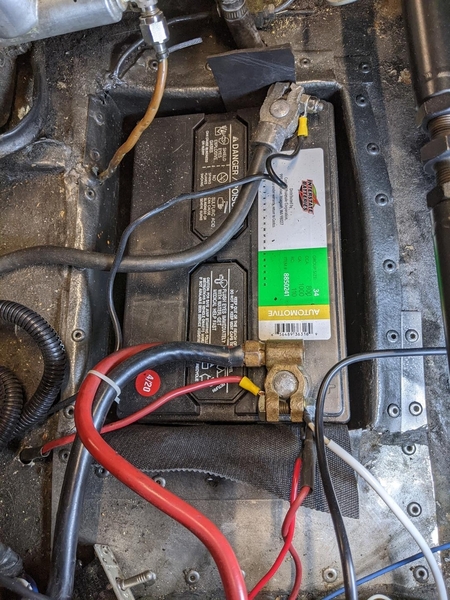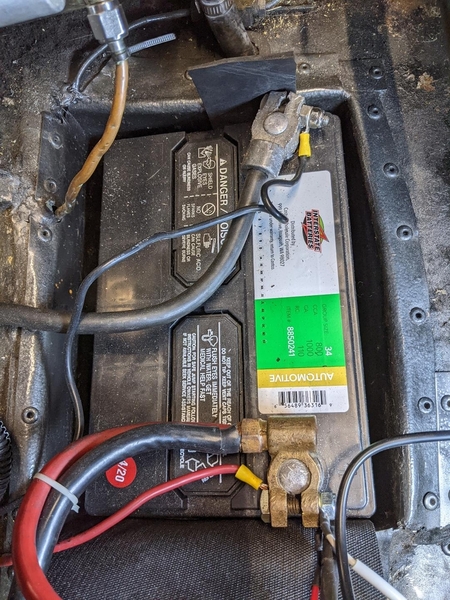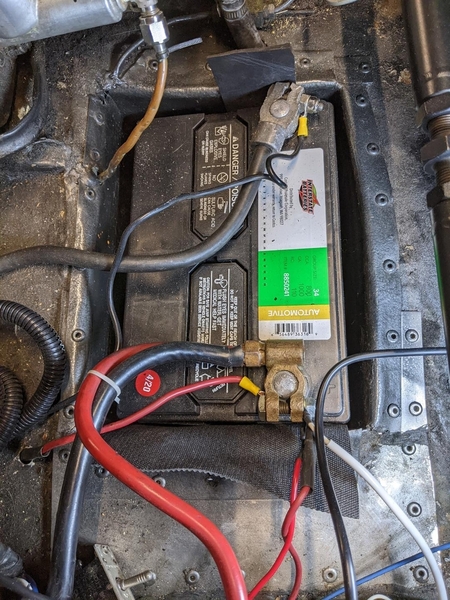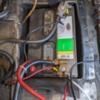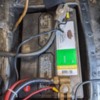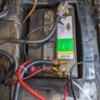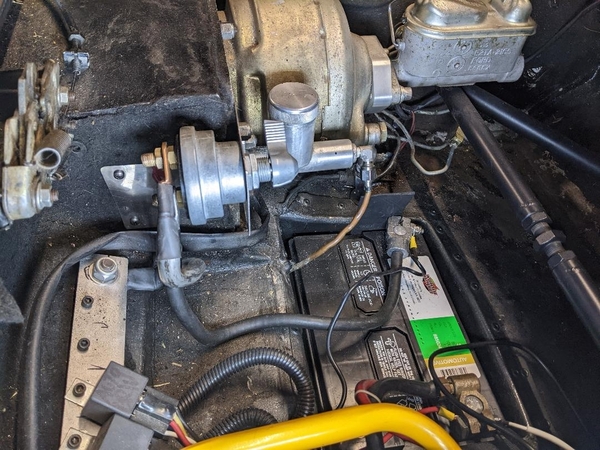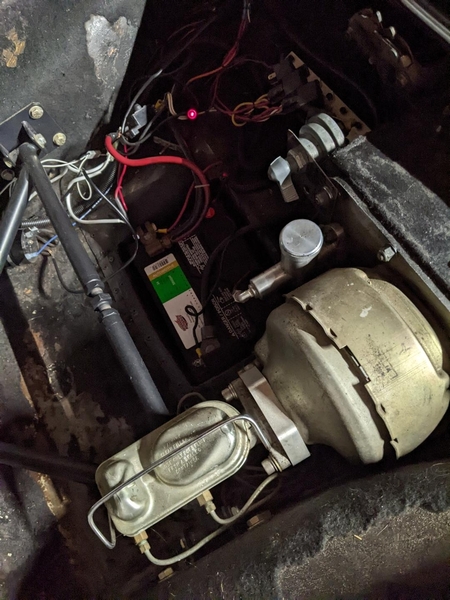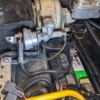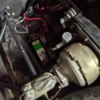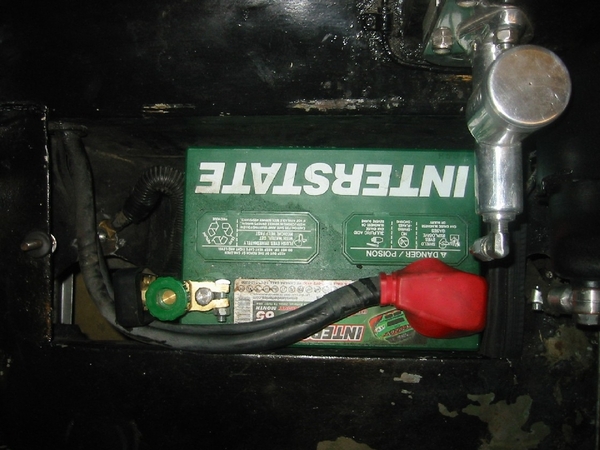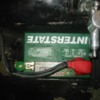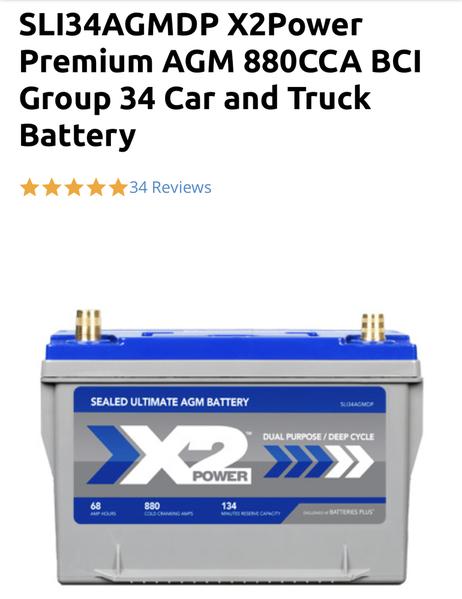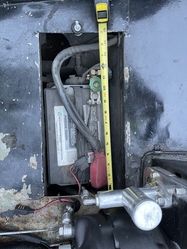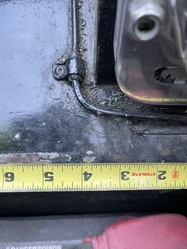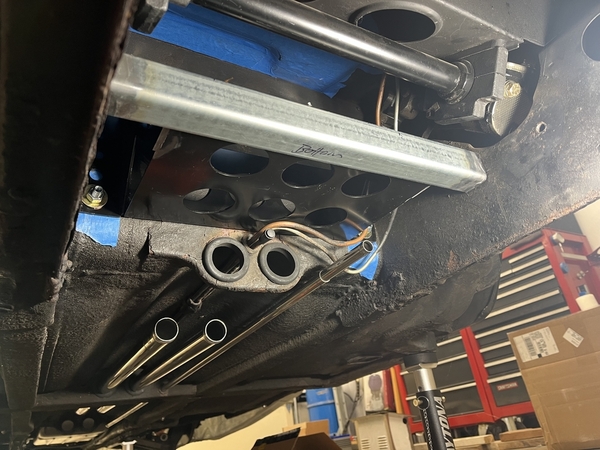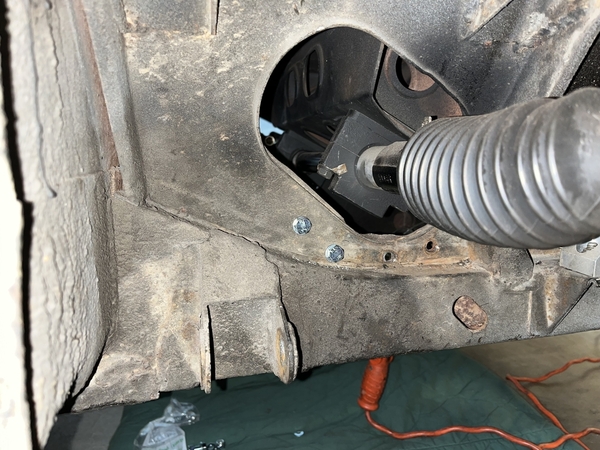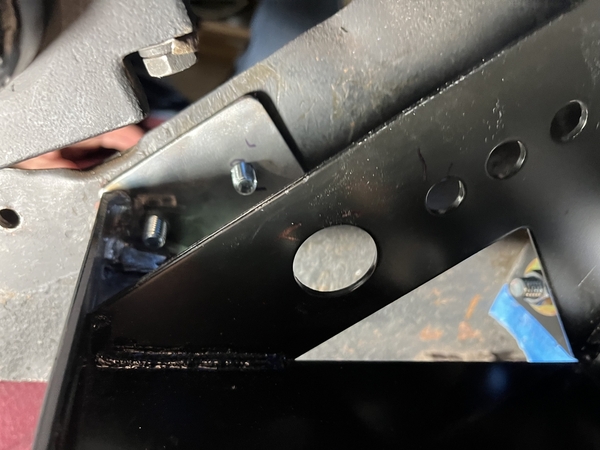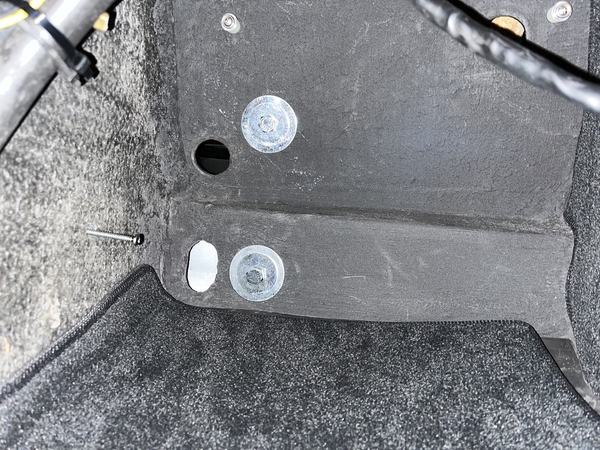I'm strongly considering relocating my battery to the dropped location between the steering rack supports. I've read every post I can find but I'm looking for some feedback from those that have done this before I cut the hole.
I purchased a box from someone who had it sitting around for a long time. After some measuring I found that it will not fit in my '74. I think it is a Hall box as it looks like pictures that have been posted elsewhere on the forum. That box measures 12-1/2" long by 6-7/8" wide. The space between my steering rack mounts is only 11-7/8". I'm working on drawing up my own design and will have it fabricated locally. If someone can use this box, it is for sale. It is 20ga stainless steel with the matching top.
Questions:
1. Did you bend a flange on the ends of the hole? If so, how did you do it and how difficult was it to do? From pictures I have found of the later cars it looks like the ends were hemmed over 180°.
2. The right side of the hole will be in the area of the original battery perch where the bottom of the trunk has been pressed up to make the area flat. What did you do on this end? The box flange will not sit flat on this end. The metal is stretched enough that I'm not sure it can be shrunk down to make it flat. I think the other end can be massaged up a little to make it flat.
I'm sure I will have more questions, but this will get the topic started.
Steve


